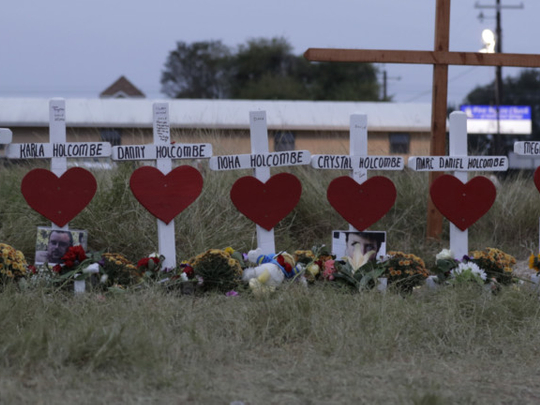
It has happened yet again: Inevitably, predictably, fatefully, another mass shooting. Recently a gunman shot dead 26 people in a Texas church. (On November 5, 2017, a mass shooting occurred at the First Baptist Church in Sutherland Springs, Texas). These episodes are peculiarly American tragedies, and what’s particularly heartbreaking is that they aren’t shocking.
People all over the world become furious and try to harm others, but only in the United States do people suffer such mass shootings so regularly; only in the US do people lose one person every 15 minutes to gun violence. So let’s not just mourn the dead; let’s not just lower flags and make sombre speeches. Let’s act. In particular, I suggest trying a new approach to reducing gun violence — a public health strategy.
America has more guns than any other country. The first step is to understand the scale of the challenge America faces: The US has more than 300 million guns — roughly one for every citizen — and stands out as well for its gun death rates. At the other extreme, Japan has less than one gun per 100 people, and typically has fewer than 10 gun deaths a year in the entire country.
The liberal approach is ineffective. Use a public health approach instead. Frankly, liberal opposition to guns has often been ineffective, and sometimes counterproductive. The ten-year ban on assault weapons accomplished little, partly because definitions were about cosmetic features like bayonet mounts (and partly because even before the ban, such guns were used in only 2 per cent of crimes).
The Left sometimes focuses on “gun control”, which scares off gun owners and leads to more gun sales. A better framing is “gun safety” or “reducing gun violence”. Gun enthusiasts often protest: Cars kill about as many people as guns, and we don’t ban them! No, but automobiles are a model for the public health approach I’m suggesting. We don’t ban cars, but we work hard to regulate them — and limit access to them — so as to reduce the death toll they cause. This has reduced the death rate per 100 million miles driven by 95 per cent since 1921. What would a public health approach look like for guns if it were modelled after cars?
There is a shocking lack of research on guns. One challenge is that for a public health approach, we need careful evidence of what works to reduce deaths, at what cost. Yet, there’s simply a scandalous lack of research on gun violence, largely because the National Rifle Association (NRA) is extremely hostile to such research and Congress rolls over.
A way forward: On some issues, majorities agree. It may sometimes seem hopeless to make progress on gun violence, especially with the NRA holding Congress hostage. But I’m more optimistic. Look, we all agree on some kinds of curbs on guns. Nobody believes that people should be able to have an anti-aircraft gun in the backyard. So the question isn’t whether we will restrict firearms, but where to draw the line and precisely which ones to restrict.
— New York Times News Service
Nicholas Kristof is an American journalist, author and a winner of two Pulitzer Prizes.












